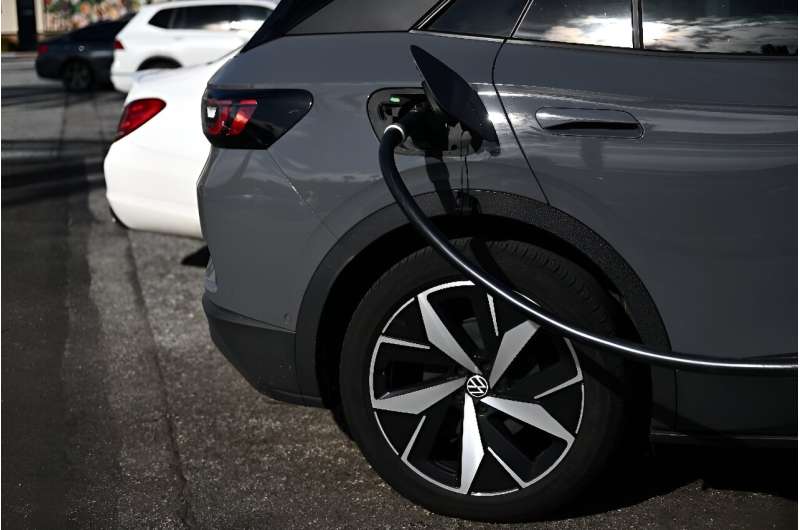
Electric cars are a key part of Europe’s green transition plans but the road ahead remains littered with obstacles with 10 years to go before a crucial milestone.
Despite the fact that the sale of new petrol and diesel cars will be banned in the European Union as of 2035, sales of plug-in “zero emission” vehicles have stalled in the region in recent months.
The market share for electric cars has shrunk from 14.16 percent last year to 12 percent or less since the start of this year, a drop attributed mainly to Germany’s decision to abruptly halt subsidies for electric car purchases on Europe’s biggest market at the end of 2023.
Sigrid de Vries, director general of the European Automobile Manufacturers’ Association (ACEA), expressed “concern”.
Fewer than 30 percent of Europeans say they plan to buy an electric vehicle (EV), according to the ACEA, and more than half refuse to pay more than 35,000 euros ($37,750) for a car, a price level offering few EVs.
The “2035 deadline… is really just around the corner, especially when you talk production cycles,” de Vries told an EV conference last week in Lillestrom, Norway.
“We need to go from 15 percent (zero-emission cars) to 100 percent in about just around 10 years,” she said.
At the end of 2023, EVs passed the “tipping point” of five percent—considered the point of mass adoption—in 31 countries around the world, according to the Bloomberg news agency.
But only two-thirds of the EU’s 27 member states have surpassed this level.
Cars are Europeans’ primary mode of transport, and account for 15 percent of Europe’s CO2 emissions.
Making vehicles emissions-free is therefore essential if the EU wants to meet its climate commitments.
Norway, a non-EU member—and also a major oil and gas producer—is a leader in EV adoption.
Led by Tesla, electric vehicles accounted for 90 percent of new car registrations in Norway in the first quarter thanks to generous tax incentives.
The country aims to reach the 100 percent mark by 2025.
Carmakers like Volkswagen and Volvo have already ended sales of their combustion models in Norway.





























